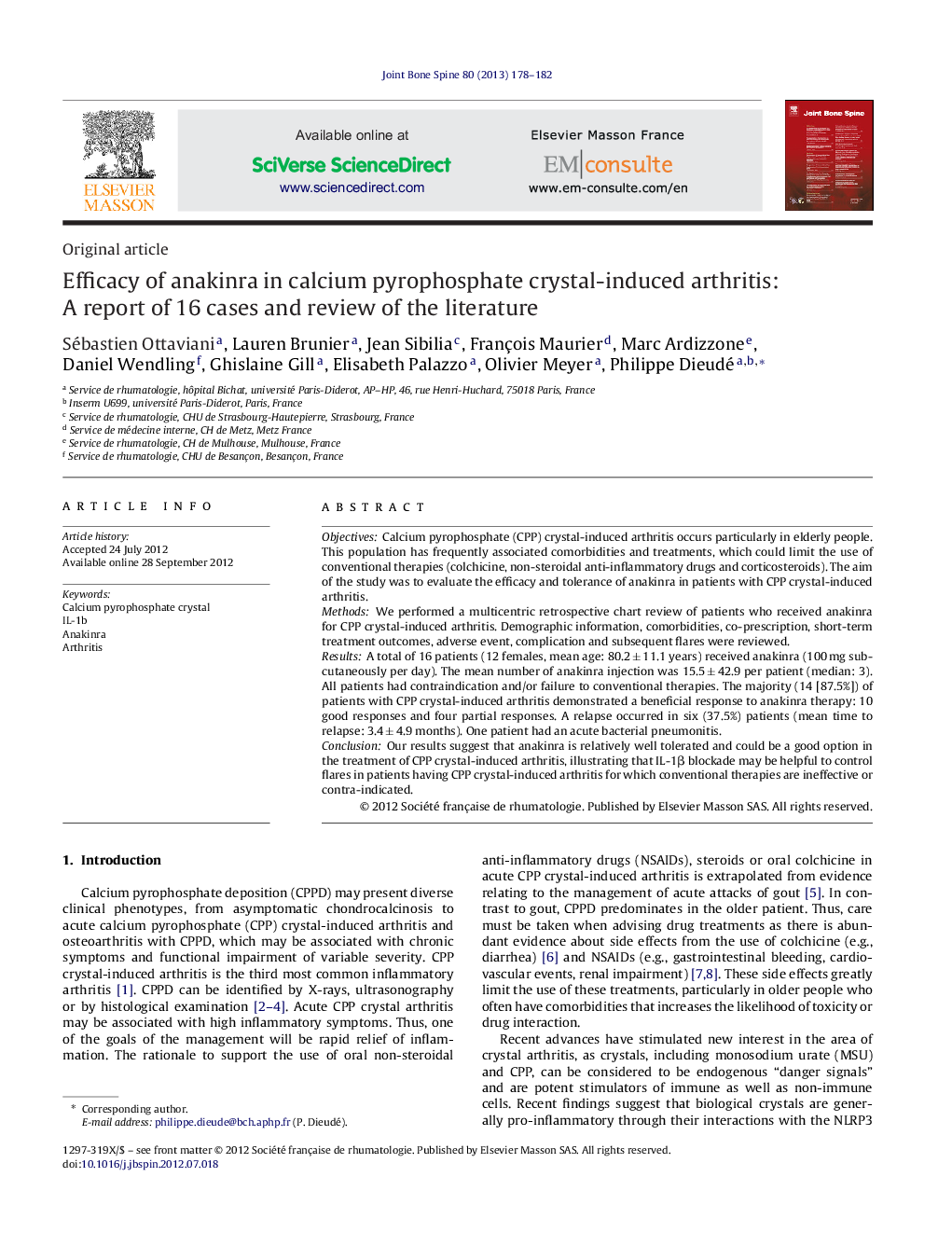| Article ID | Journal | Published Year | Pages | File Type |
|---|---|---|---|---|
| 3366198 | Joint Bone Spine | 2013 | 5 Pages |
ObjectivesCalcium pyrophosphate (CPP) crystal-induced arthritis occurs particularly in elderly people. This population has frequently associated comorbidities and treatments, which could limit the use of conventional therapies (colchicine, non-steroidal anti-inflammatory drugs and corticosteroids). The aim of the study was to evaluate the efficacy and tolerance of anakinra in patients with CPP crystal-induced arthritis.MethodsWe performed a multicentric retrospective chart review of patients who received anakinra for CPP crystal-induced arthritis. Demographic information, comorbidities, co-prescription, short-term treatment outcomes, adverse event, complication and subsequent flares were reviewed.ResultsA total of 16 patients (12 females, mean age: 80.2 ± 11.1 years) received anakinra (100 mg subcutaneously per day). The mean number of anakinra injection was 15.5 ± 42.9 per patient (median: 3). All patients had contraindication and/or failure to conventional therapies. The majority (14 [87.5%]) of patients with CPP crystal-induced arthritis demonstrated a beneficial response to anakinra therapy: 10 good responses and four partial responses. A relapse occurred in six (37.5%) patients (mean time to relapse: 3.4 ± 4.9 months). One patient had an acute bacterial pneumonitis.ConclusionOur results suggest that anakinra is relatively well tolerated and could be a good option in the treatment of CPP crystal-induced arthritis, illustrating that IL-1β blockade may be helpful to control flares in patients having CPP crystal-induced arthritis for which conventional therapies are ineffective or contra-indicated.
